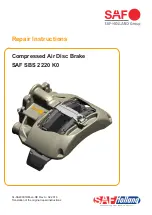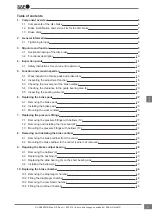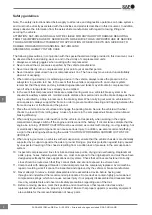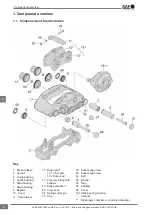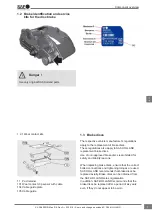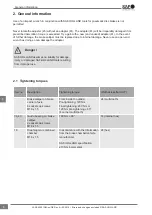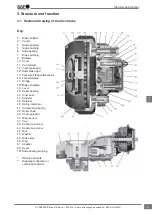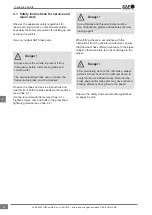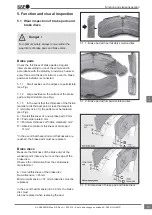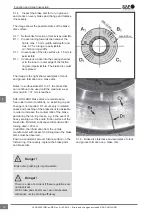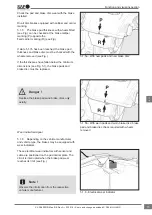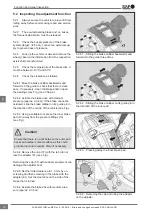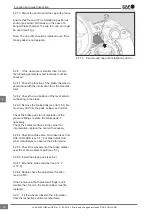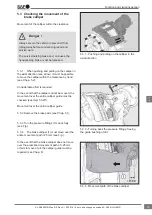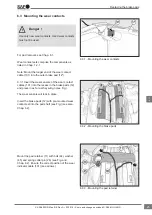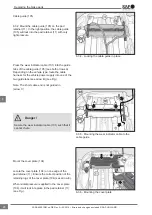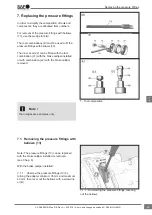
5.1.4 Inspect the brake disc for run-in grooves
and cracks on every brake pad change and replace
if necessary.
The image shows the possible states of the brake
disc surface.
A1 = Network-like formation of cracks is permissible
B1 = Cracks running towards the centre of the
hub to max. 1.5 mm (width and depth) and
max. 0.75 x a long are permissible
(a = friction ring width)
C1 = Unevenness of the disc surface to 1.5 mm is
permissible
D1 = Continuous cracks into the cooling channel
or to the inner or outer edge of the friction
ring are impermissible. The brake disc must
be replaced.
The image to the right shows examples of crack
and groove formation on a brake disc.
Notes: In surface states A1 to C1, the brake disc
can continue to be used until the maximum wear
dimension E = 37 mm is reached.
SAF-HOLLAND brake discs are maintenance-
free under normal conditions, i.e. polishing on pad
change is not required. D1 occurs only in isolated
cases and polishing of the brake discs is advisable
in order to increase the contact ratio of the brake
pad during the run-in process, e.g. in the event of
heavy scoring over the entire friction surface of the
brake disc. Minimum subsequent dimension after
turning down >39 mm.
In addition, the information from the vehicle
manufacturer with respect to turning down the brake
discs must be observed.
Ensure a consistent, all-over friction surface on the
friction ring. If necessary, replace the brake pads
and brake disc.
Brake disc polishing is impermissible.
Danger !
There is a risk of accident if these regulations are
not observed!
Worn brake pads and/or over-worn brake discs
will reduce or stop braking efficiency.
Danger !
5.1.4 - Brake disc tolerance and examples of crack
and groove formation on a brake disc
Function and visual inspection
14
en
XL-SA40001RM-en-DE Rev A • 02.2016 • Errors and changes excluded © SAF-HOLLAND

